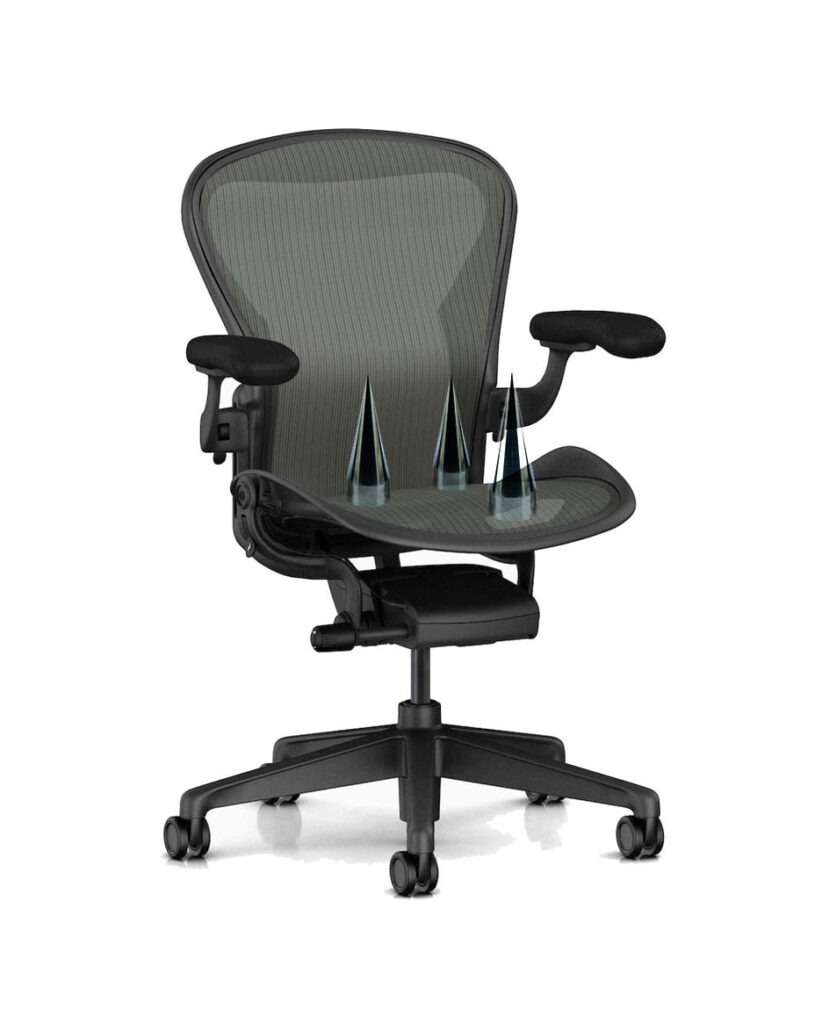Workplace ergonomics refers to the design of the workplace, including the arrangement of equipment, tools, and furniture to create a safe and comfortable working environment. The objective of ergonomic design is to reduce physical stress and injury, while increasing productivity and job satisfaction.
Employers have a responsibility to ensure that their employees have a safe and healthy work environment. Failing to provide an ergonomic workspace can result in a range of physical and mental health issues, which can have a significant impact on employee productivity and morale.

One of the most common problems caused by poor ergonomics is musculoskeletal disorders or MSDs, injuries and disorders that affect the muscles, tendons, nerves, and joints. Common examples of MSDs include carpal tunnel syndrome, back and neck strain. These injuries can be caused by repetitive movements, awkward postures, and prolonged sitting or standing. MSDs can lead to reduced productivity, increased absenteeism, and even disability.
Poor ergonomics can also lead to eye strain, headaches, and fatigue. When employees spend hours staring at a computer screen without taking breaks or adjusting their workstation, they can experience a range of physical symptoms. Eye strain can cause blurred vision, dry eyes, and headaches. Fatigue can lead to decreased energy levels and reduced productivity.
On the other hand, well-designed ergonomic workspaces can have a positive impact on employee health and productivity:
Reduced physical strain: Ergonomic furniture and equipment can help reduce physical strain on the body, making it easier for employees to perform their tasks comfortably and safely. For example, a properly adjusted chair can reduce the risk of back pain, while a monitor stand can reduce neck strain.
Increased productivity: When employees are comfortable and free from physical discomfort, they are better able to focus on their work. This can lead to increased productivity, as well as higher job satisfaction.
Improved morale: Providing employees with a comfortable and safe workspace can help improve morale and reduce absenteeism. When employees feel that their employer cares about their well-being, they are more likely to feel valued and motivated to perform their best.
Enhanced creativity: An ergonomic workspace can help reduce distractions and provide a more conducive environment for creative thinking. When employees are comfortable and free from physical discomfort, they are better able to focus on their work and generate new ideas.
To create an ergonomic workspace, employers should consider the following factors:
Furniture: The type and quality of furniture can have a significant impact on employee comfort and health. Chairs should be adjustable, with proper lumbar support and armrests. Desks should be at the right height to prevent neck and shoulder strain. Footrests can also be helpful for employees who are shorter in stature.
Equipment: Computer monitors should be positioned at eye level to reduce neck strain, and keyboards should be positioned so that the wrists are straight and not angled. Mice and trackpads should be positioned close to the keyboard to reduce reaching.
Lighting: Proper lighting is important for reducing eye strain and headaches. Natural light is best, but if that is not available, employers should ensure that workspaces are well-lit with adjustable lighting.
Breaks: Employees should be encouraged to take breaks throughout the day to stretch, move around, and rest their eyes. Regular breaks can help reduce physical strain and increase productivity.
Workplace ergonomics is an important factor in ensuring employee health and productivity. Employers should prioritize the design of ergonomic workspaces to prevent musculoskeletal disorders, eye strain, headaches, and fatigue. By providing employees with a safe and comfortable working environment, employers can improve morale, productivity, and job satisfaction.

